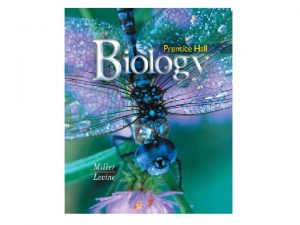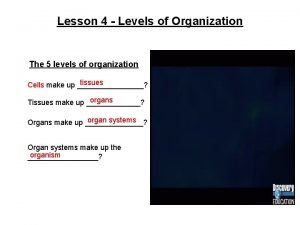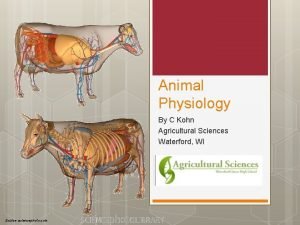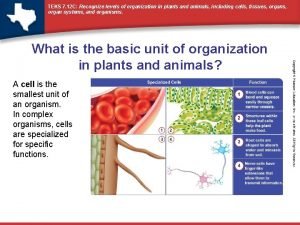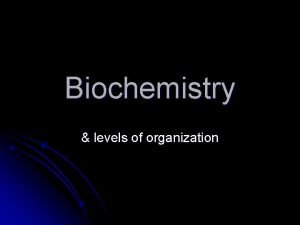TEKS 7 12 C Recognize levels of organization








- Slides: 8

TEKS 7. 12 C: Recognize levels of organization in plants and animals, including cells, tissues, organ systems, and organisms. What is the basic unit of organization in plants and animals? A cell is the smallest unit of an organism. In complex organisms, cells are specialized for specific functions.

TEKS 7. 12 C: Recognize levels of organization in plants and animals, including cells, tissues, organ systems, and organisms. How do cells work together? Specialized cells do not work alone. A tissue is a group of similar specialized cells that work together to perform a specific function. Animals have four types of tissue. • Connective tissue adds support and structure. • Epithelial tissue is protective. • Muscle tissue moves body parts. • Nerve tissue relays information. (contd. )

TEKS 7. 12 C: Recognize levels of organization in plants and animals, including cells, tissues, organ systems, and organisms. Plants also have tissues. • • • Dermal tissue protects the plant and helps prevent water loss. Vascular tissue transports water, minerals, and food throughout the plant. Ground tissue is responsible for photosynthesis, food storage, support, and protection.

TEKS 7. 12 C: Recognize levels of organization in plants and animals, including cells, tissues, organ systems, and organisms. How else are plants and animals organized? • An organ combines different kinds of tissues that function together. • Your brain is an organ in which nerve, connective, and epithelial tissues work together. Your heart is an organ made of muscle, nerve, connective, and epithelial tissues. • Plant organs include roots, stems, and leaves. These organs all contain the three types of plant tissues. (contd. )

TEKS 7. 12 C: Recognize levels of organization in plants and animals, including cells, tissues, organ systems, and organisms. • An organ system is a group of organs that work together to perform a major function. • Complex animals have many organ systems, such as the nervous system and the muscular system. • Plants have only two organ systems, the shoot system and the root system. (contd. )

TEKS 7. 12 C: Recognize levels of organization in plants and animals, including cells, tissues, organ systems, and organisms. • An organism is a complete living that relies on cells for life functions. • In a complex organism, all the cells, tissues, organs, and organ systems work together. They carry out the functions necessary for the organism’s life.

TEKS 7. 12 C: Recognize levels of organization in plants and animals, including cells, tissues, organ systems, and organisms.

TEKS 7. 12 C: Recognize levels of organization in plants and animals, including cells, tissues, organ systems, and organisms. 1. Recognize Levels of Organization What is the relationship between cells and tissues? 2. Evaluate Why is the heart an organ and not simply a tissue? 3. Exemplify Name two other organ systems in the human body besides the nervous and muscular systems.




